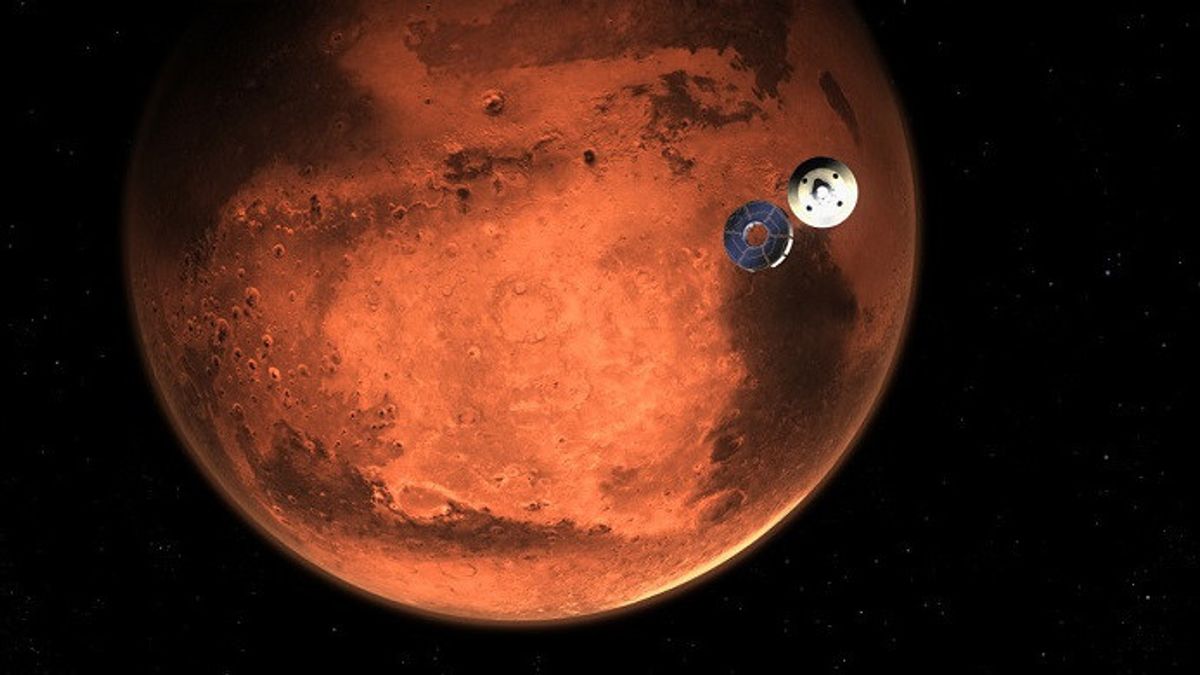JAKARTA - One of the heaviest microbes in the world is found asleep below the surface of Mars, and it has survived well for 280 million years.
This microba, which was discovered in a recent study, is Deinococcus Radiodurans. He is nicknamed the Conan the Bacterium, one of the heaviest microbes in the world, which is able to survive strong radiation to kill other known forms of life.
In this latest study, Conan the Bacterium or similar microbes are on Mars, able to survive beneath a frozen and dry surface for 280 million years.
The study was led by Michael Daly, who is a professor of pathology at the University of the Health Sciences in Maryland and a member of the National Committee for Planet Protection.
Scientists tested half a dozen microbes and fungi similar to Conan the Bacterium, all extrophils that resemble small labs and are able to live in an environment where other organisms die.
Launching Metro, Wednesday, October 26, the purpose of this research is useful to see how long they can survive in an environment that simulates Mars' midlatitude.
During the study, organisms faced temperatures as low as minus 80 degrees Fahrenheit, exposure to ultraviolet light, gamma rays, high-energy protons that mimic the constant bombardment of Mars by solar ultraviolet light and cosmic radiation down from space.
As a result, Conan the Bacterium can only last a few hours on the surface when ultraviolet rays blanket it, but it can absorb 28,000 times more radiation than humans can do.
Previous experiments, Conan the Bacterium suspended in liquid water and experienced radiation as found on Mars, but the microbes could survive under the Martian surface for 1.2 million years.
And this latest trial, where the microbes are frozen and dried to mimic cold and dry conditions on Mars, shows the Conan the Bacterium was able to last 280 million years on Mars if buried at a depth of 33 feet.
That age was reduced to 1.5 million years if buried just 4 inches below the surface and just a few hours on the surface, which emitted ultraviolet light.
In addition, the study also found why Conan the Bacterium is so resistant to radiation. It turns out that the chromosomes and plasmids that carry genetic information in the microbial cells are interrelated, keeping this structure in harmony and preventing irradiational cells from being damaged until they can be repaired.
Later, the sample return mission can bring these microbes back to Earth. In fact, experiments on the International Space Station (ISS) have confirmed Conan the Bacterium can last at least three years in space.
Even so, caution is multiplyed so as not to pollute the Earth with Martian microbes. And the mission of the Red Planet in the future, both manned and robotic, also needs to be watched out for polluting Mars with Earth's microbes.
The English, Chinese, Japanese, Arabic, and French versions are automatically generated by the AI. So there may still be inaccuracies in translating, please always see Indonesian as our main language. (system supported by DigitalSiber.id)










